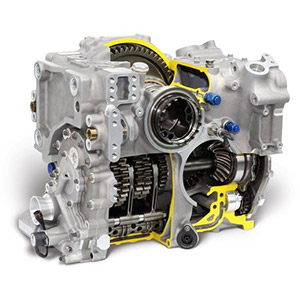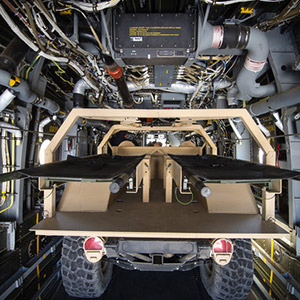R&D Tax Credit News

These 5 Activities Could Increase Your R&D Credit
February 25, 2021
While businesses are looking for ways to increase profitability and cash flow, and reduce tax liability throughout the year, it becomes more of a top–of–mind issue as the calendar rolls towards the tax filing deadlines in March and April.
Companies with qualified R&D activities that have not claimed the credit before can generate a significant impact. Businesses paying income tax not only can see an immediate boost to profitability by reducing income tax on a current year’s return, but they are able to go back and claim credit for three prior tax years, amend those returns, and receive a check back from the government. Just by making the decision to claim the credit, an organization can generate cash that can be used to invest in hiring people, equipment or expansion.
Organizations that aren’t profitable and haven’t been profitable can also go back three open years to claim credits, but there may not be any usability of those credits until they are profitable. The benefit for companies that are operating at a loss, have less than $5,000,000 in revenue and are within a five-year window of recording their first revenue is using the credit to offset payroll tax. This option can only occur on a timely filed return, however, once filed the credits can be used the quarter after you file immediately impacting cash flow and months of cash. For example, if a company is eligible to use the credit to offset payroll tax files on March 31, they can begin using that credit in April. If they file in April, they could begin using those credits in July.
But what if you are a company that has been claiming the credit? What are ways you can increase your credit to benefit the bottom line? Below are a list of five overlooked activities across several different industries that can increase your R&D Credit.
- System Integration
When companies think of R&D, they think of traditional activities that happen in a lab like chemical experiments, testing, etc. The truth is that federal (and most states’) R&D credits reward research activities at a much lower level of innovation. The legislation describes the exact set of criteria that activities must pass to be eligible for the credit. This is commonly called the four-part test (outlined in Treasury Regulations Sec. 1-41.4):
- Technological in Nature– Activities performed must be based on the “hard sciences” such as physics, engineering, computer sciences, biology, and chemistry.
- Technological Uncertainty– You are performing your development activities to uncover information you don’t already know, creating uncertainty as to the appropriate method, design, or capability related to your product, process, or software.
- Process of Experimentation– Activities require a process of theoretical and/or physical evaluation that can result in the development of design alternatives.
- Permitted Purpose– The goal of the activity must be to create new or improve the function, performance, reliability, or quality of a product, process, or software.
In the vast majority of projects undertaken by systems integrators, the four-part test is easily met. Most systems integration (or systems engineering) projects will:
- Technological in Nature– Require full reliance on engineering principles.
- Technological Uncertainty– Require a design with unique characteristics to fulfill government specifications.
- Process of Experimentation– Require thorough evaluation of design and prototypes and even a sign-off before delivery and/or deployment.
- Permitted Purpose– Create a new function or improve an existing system such as weapons, communications, navigation, etc.
The fact that a company is in the systems integration business doesn’t mean it won’t have to design, develop, test, refine, and optimize technology solutions the same way other industries do. Whether employees on staff are doing the work, or there is the help of subcontractors and consultants, the activities being performed have a very high likelihood of qualifying for valuable R&D credits.
- R&D Activities in Government Contracts
Tax regulations and case law have proven that R&D activities within government contracts can be included in R&D Credit as long as the activities pass the four-part test (see above), the taxpayer is at financial risk and the taxpayer retains at least some portion of the IP.
However, what normally happens is a government contractor will seek out the advice of a trusted advisor, that trusted advisor will say, “the tax code says funded research is excluded,” and a company that has significant credits built up in these government contracts is essentially leaving cash on the table.
As an example, take a $1,000,000 FFP SBIR contract. The SBIR program is designed in a way in which the taxpayer retains at least some of the IP. With that box checked, lets move on to financial risk. Financial risk means are you at risk of not getting paid if the work you do is not delivered or accepted. Regarding FFP contracts, those contracts generally result in the taxpayer being paid upon delivering a report, or a prototype or some other deliverable. If they don’t deliver, they don’t get paid. That’s financial risk. With that box checked, and assuming the activities pass the four-part test, that $1,000,000 award can generate $50,000 in federal and state R&D Credits. That’s $50,000 of credits, or cash, on top of IR&D activities and other eligible activities.
- Government Contracts – Bid and Proposal Time
Speaking of other eligible activities, that time you spend developing a proposal for a SBIR award, STTR award or other government contract is eligible for the credit. If you track time, this amount can easily be extracted from your accounting system as most companies track proposal time to one charge code (although it could also be to multiple B&P projects). The reason this can be included is because bid and proposal expenses are internally funded and IRS Regulations further guarantee this.
- Athlete Sponsorship
You are a company that has a sponsorship with a sports team or an athlete, and that team or athlete uses your product and provides you technological feedback on the performance of that product. That feedback results in alterations to the fit, form, or function of that product. A portion or all of that sponsorship arrangement can come back in the form of an R&D Credit. For questions on this, reach out to a specialist.
- Field Testing
For field testing, let’s think of companies in the sporting goods industry or auto industry in which employees that work for the company are enthusiasts. An example could be a cycling company that has employees that like to ride bikes or racing enthusiasts that work at an automotive company. If salaried employees test pre-production items or prototypes and provide feedback on those products, that is time that can be included for purposes of the R&D Credit. For example, a salaried marketing employee that is not involved whatsoever in direct R&D activities but spends time on the weekends testing prototype products, a portion of his/her time would then be includable for credit purposes.
These examples show how an engineering-based approach to the R&D Credit can uncover additional opportunities to increase the credit. More importantly, these types of activities have withstood the scrutiny of audit due to proper supporting documentation to defend the activities. If you’re looking to leave no stone unturned, have an exploratory conversation to determine whether this would be impactful for your situation and your company.
Featured Projects





